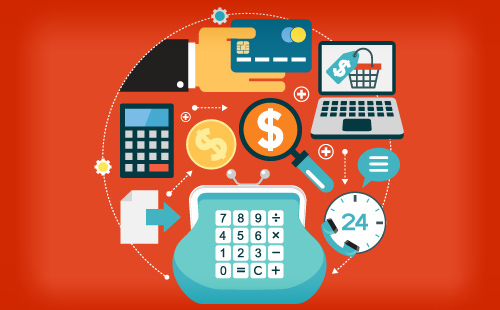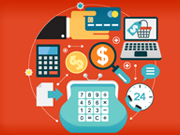Estimated reading time: 4 minutes

The payment processing landscape has changed drastically since the turn of the century, and emerging technologies will likely continue this trend for at least the next decade. The average consumer relies on technology more than ever before. This reliance has led to a focus on convenience when it comes to payments. The most recent payment processing development is the boom of digital/online payments with mobile devices. Security is also a major concern for most consumers, and a variety of new technologies have been developed to make strides on that front.
Take a look at some of the exciting, new trends and technologies in payment processing:
Near-Field Communication (NFC)
NFC technology has been around for years, but it saw an enormous jump in popularity with Apple’s introduction of Apply Pay. Other payment processing services, like Google Wallet and CurrentC, also offer simple and secure ways for consumers to make purchases with their phones. NFC is becoming a more common payment option because it is quick and easy to use, but it also protects credit card information. Mobile wallet applications use tokenization –a random number that works in place of a credit card number and cannot be reused – to protect consumers from thieves.
Even though Apple Pay has consumers thinking about NFC, there are a few hurdles the technology still has to clear. Many small and medium sized businesses do not have the overhead to implement NFC. And, while it is “cool” to make payments with a smartphone, is it convenient or fast enough that consumers will choose it over credit cards or cash? NFC can also be used to transmit information or act as key cards, but its success as a payment option will determine if it’s a fad or if it’s here to stay.
EMV
EMV – which stands for Europay, MasterCard, and Visa – is a new credit and debit card standard that uses a secure chip card technology. EMV fits in with the worldwide shift toward more secure payment options. In October of 2015, a liability shift will be implemented for businesses that have not upgraded to handle EMV-compliant cards. The companies issuing credit and debit cards are typically liable for fraudulent transactions. However, failing to switch to EMV payment terminals puts customers at a higher security risk. Any business that does not make the switch will be held accountable for fraudulent transactions.
Much like NFC technology, EMV has a few obstacles to overcome. The cost of EMV implementation could be difficult for businesses to deal with, but the biggest problem the card technology faces is that it does not prevent card-not-present (CNP) fraud. Transactions made over on the internet do not benefit from the secure chip card technology of EMV. Each year, the number of eCommerce transactions grows. Until EMV can account for all transaction types, fraud will still be a big problem.
Beacons
Beacons use Bluetooth to send messages to phones or tablets in a particular area – most likely a retail space or restaurant. These devices are inexpensive and do not take up much space, and they can be used to send promotions or deals to potential customers. This is an entirely new way to market to consumers. Beacons are less intrusive and more efficient than other methods of distributing information or promotions and they are also perfect for generating impulse purchases. Beacons also have the potential to act as a contactless payment system, which would greatly speed up the checkout process.
Bitcoin
Bitcoin is a digital currency that operates independently of a central bank. It uses encryption to regulate the creation of the currency and is able to verify transactions. Although a variety of crypto-currencies have popped up over the last few years, Bitcoin was the original and remains the most popular. Bitcoin has risen in popularity thanks, in part, to the freedom it offers to everyone. It’s possible to send money to anyone, anywhere, and at any time. Plus, there are no merchant fees or payment processing costs.
Bitcoin gives users control over their money and it can be backed up and encrypted to ensure security. However, Bitcoin does not come without risks. At this point, many people do not know that Bitcoin exists. Plenty of people also have trouble understanding how it works – it’s not as accessible or intuitive as simply using cash or a credit/debit card. Bitcoin is also still in its infancy; it has a lot of growing to do before it reaches its full potential.
The future of payment processing is not set in stone. At the moment, it appears as though the four aforementioned technologies will play a vital role in payments for at least the next decade. However, trends can shift and new technologies can gain prominence. The quest for a more secure payment processing environment is likely to continue for quite some time.

